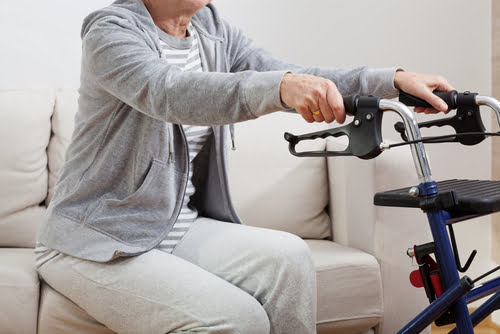According to the « ANFE » (Association Nationale Française des Ergothérapeutes), the goal of the occupational therapy is to “maintain, restore and enable human activities in a secure, autonomous and efficient manner”.
In a booming industry, the profession of occupational therapist bases its practice on the link between human activity and health and aims to prevent, reduce or even eliminate disability situations by taking into account people’ lifestyle and their environment. Explanations.

What is an occupational therapist?
The occupational therapist helps people to do what they want and to do what they need to do, on a daily basis. For example, an illness or a disability may limit the ability of the elderly to self-care, to move, to communicate or to entertain himself. The occupational therapist finds the solution to these different problems, by adapting the environment and the lifestyle.
Moreover, with the help of an occupational therapist, it is possible to find suitable solutions to meet the challenge of everyday life, remove barriers and allow seniors to find or maintain their social roles to live the life they want. The solutions imagined may be technical, organizational, human or technological.
When to call an occupational therapist?
 It is recommended to ask for the occupational therapist’s services as soon as you have difficulties in everyday life, such as dressing, washing, eating, cooking or shopping.
It is recommended to ask for the occupational therapist’s services as soon as you have difficulties in everyday life, such as dressing, washing, eating, cooking or shopping.
However, the demand generally occurs after a domestic accident or in case of a sudden loss of autonomy. For example, a fall can reduce several abilities and / or generate a feeling of anxiety and frustration in daily actions.
The purpose of occupational therapy is to advise the elderly and to find different ways and solutions to empower them or allow them to consider other ways to carry out their activities or life projects: prevention is better than cure!
Read also: Ageing in place: how to adapt your home
How is the diagnosis given?
At first, the occupational therapist goes to the patient’s homes, to analyse their problems, difficulties but also understand their wishes and expectations. This is why it is often called “a life project”.
 He assesses the overall abilities (cognitive, motor, sensory, …) of the patient, their lifestyle and their entourage, then collects information on its internal and external material environment: access, circulation between rooms, activities…
He assesses the overall abilities (cognitive, motor, sensory, …) of the patient, their lifestyle and their entourage, then collects information on its internal and external material environment: access, circulation between rooms, activities…
Based on the results, the occupational therapist realizes a report, with several personalized recommendations, proposing solutions, orienting towards artisans, suppliers or financing organizations …
In addition, the occupational therapist can also perform different other tasks, such as learning the patients how to use the equipment, putting them in contact with artisans, confirm or adjust the quality of use of the technical solution, help the patients for finding financial solutions or even perform a functional compliance visit by the end of the day.
Read also: Infographics: How to make a home safe for old people
Published by the Editorial Staff on
